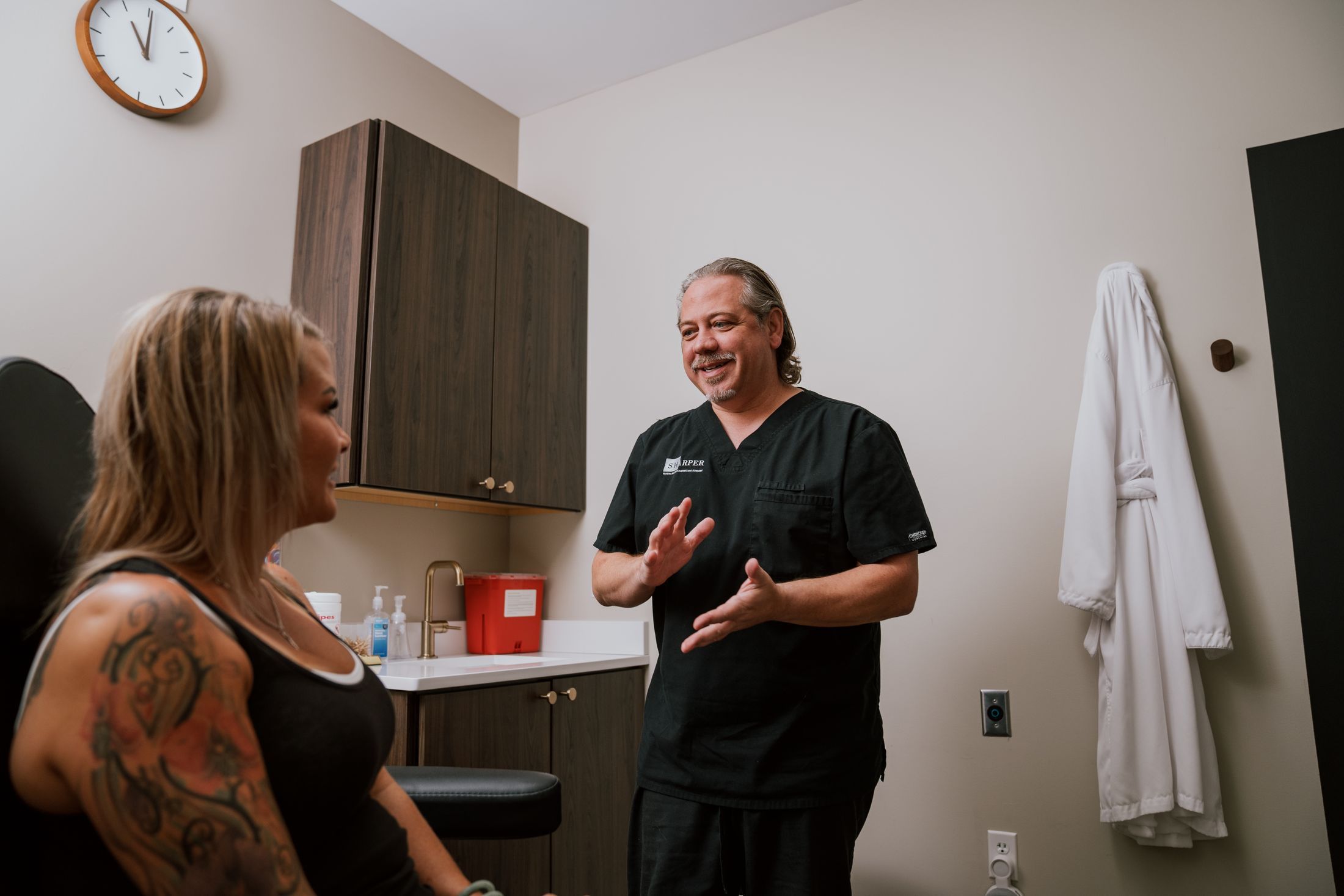
Blepharoplasty
BLEPHAROPLASTY
- You will have sutures in your eyelids. They will need to be removed in the office within the next week. Please leave the steri strips (paper tapes) intact.
- You may shower and gently wash your hair 24 hours post-operatively. Be careful to adjust the water temperature and pressures striking the face appropriately. Soap and shampoo are encouraged.
- Expect significant tightness for the first several days.
- Driving may be resumed once one’s reaction times, reflexes, and abilities are back to “normal”. One cannot drive while taking narcotic pain relievers. This usually requires up to 7 to 10 days for most people to be safe behind the wheel.
- Ice packs (bags of frozen peas or corn work well for this purpose) or moistened iced saline gauze pads may be used over the eyes for the first 1-3 days post-op. This may provide some additional comfort and help decrease swelling. Never put ice directly on the skin, as this might cause frostbite.
- Sutures will be removed on subsequent post-operative office visits as needed.
- One should continue to apply the provided antibiotic ointment to the suture line at least twice daily to keep the area lubricated.
- Avoid heavy lifting for at least 2 weeks after surgery. A 10 pound weight limit is advisable initially. Strenuous activity should be limited for 2-4 weeks post-operatively.
- You may resume the use of eye makeup two weeks following surgery. Please use new tubes of mascara, eye liner or makeup initially to prevent applying contaminated makeup with bacteria on the new surgical areas. You may resume wearing your contacts approximately 2 weeks after surgery.
- Activity should be gauged to how one feels. Early ambulation is strongly encouraged. More strenuous activity can be resumed in 2 weeks. Elevation of the heart rate and blood pressure should be avoided for the first 2 weeks to minimize swelling and bruising.
- The eyes may be dry for the first few days. Moistening with “Natural Tears” drops or “Ocu-visc” is recommended during waking hours. Lacrilube is useful during sleeping hours.
- Temperature elevations to 100-101 degrees in the first 2-4 days are usually due to collapse of the small air passages in the lungs after general anesthesia. This usually does not represent infection in most cases unless accompanied by other signs and symptoms such as redness, unusual drainage, increasing pain, etc. This is usually improved with deep breaths, increased activity and occasionally forcing a cough to re-expand the lungs.
- All pain medication can cause nausea when taken on an empty stomach. Please take every dose with food to avoid this problem. A choice of pain medications has been provided. Please choose one and do not change unless a problem occurs with a particular medication or you wish to “step down” to a lesser strength narcotic. ALL pain medications cause constipation. Please use laxatives or stool softeners as needed.
- Early and frequent walking is necessary to prevent the risk of blood clots that could pass to the heart or lungs resulting in a pulmonary embolus. Significant pain and swelling in the leg or sudden onset of shortness of breath are very important symptoms that demand immediate attention.
- Concealer can be applied to bruised areas but make-up over the incisions should NOT be applied for at least 7-10 days. The wounds need to be well on the way toward healing before this is done.
- If you develop increased redness, warmth, pain, or temperature in excess of 101 degrees, please call our office and have your pharmacy’s phone number available.
- Resumption of sexual activity is dictated by ones physical comfort level.
- Areas of firmness or “lumpiness” can be felt when touching the surgical sites. This will return to normal over the next several weeks.
Please call our office if you have any concerns or questions not addressed in this instruction sheet.

SHarpen Your Look
Schedule your Indianapolis aesthetics consultation.
Embrace your best confidence. Our board-certified surgeon and master injector are here to guide you toward an impeccably and authentically youthful appearance with personalized care and advanced solutions. Begin your journey with a consultation, and take the first step to a vibrantly confident future.
SHarper Plastic Surgery
10090 East US Highway 36, Suite D Avon, IN 46123Surgery Center (day of surgery, only)
2007 N. Capitol Avenue Indianapolis, IN 46202SHarper Surgery, Spa & Salt Lounge
11591 Yard St, Unit 510 Fishers, IN 46037WellBridge Surgical (day of surgery, only)
6300 Technology Center Drive Zionsville, IN 46077©
2024
Sharper Plastic Surgery
All Rights Reserved | Sitemap
| Privacy Policy | Accessibility | Notice of Open Payment Database
Accessibility: If you are visually impaired or have some other impairment and you wish to
discuss potential accommodations related to using this website, please contact our office at 317.399.4567.


